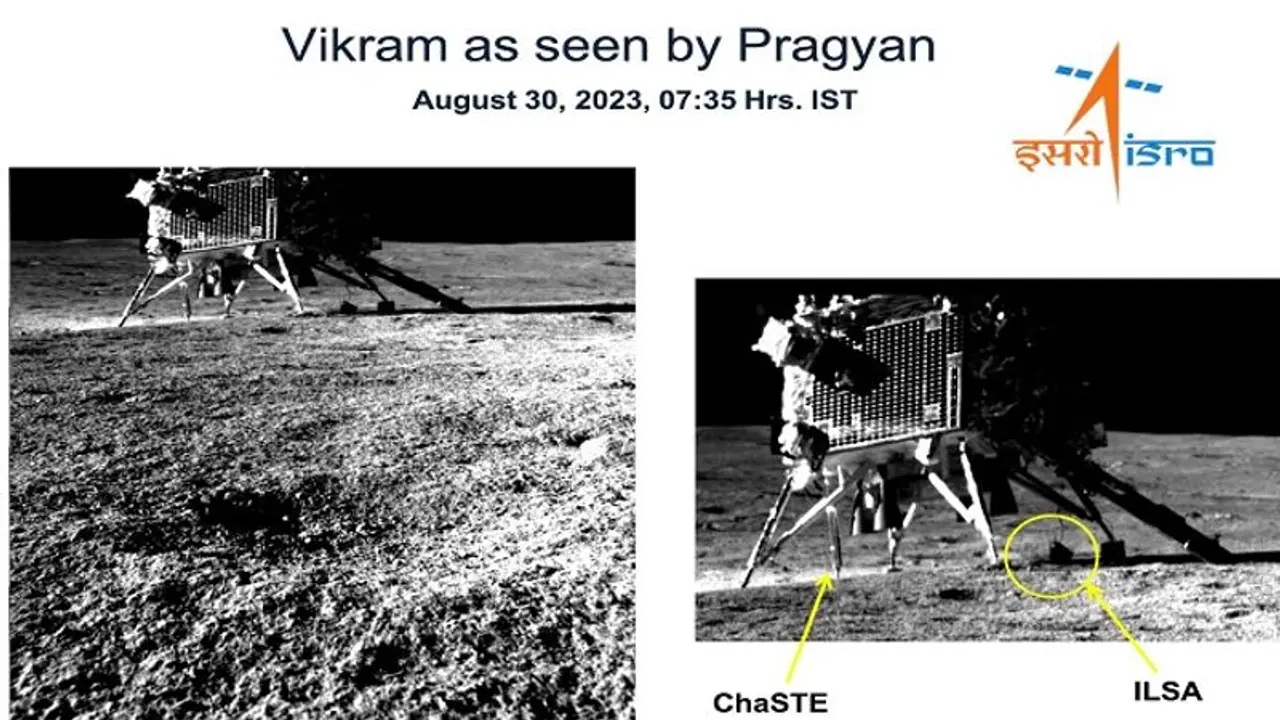This achievement follows last week's historic event when Chandrayaan-3's Vikram lander successfully landed on the moon's surface, solidifying India's position as the fourth country to achieve this remarkable feat and the first to touch down on the unexplored southern pole of the moon.
Chandrayaan-3 rover Pragyaan on Wednesday (August 30) marked a significant moment by capturing an image of the Vikram lander through its Navigation camera. This achievement follows last week's historic event when Chandrayaan-3's Vikram lander successfully landed on the moon's surface, solidifying India's position as the fourth country to achieve this remarkable feat and the first to touch down on the unexplored southern pole of the moon.

In a tweet, ISRO said, " Smile, please! Pragyan Rover clicked an image of Vikram Lander this morning. The 'image of the mission' was taken by the Navigation Camera onboard the Rover (NavCam). NavCams for the Chandrayaan-3 Mission are developed by the Laboratory for Electro-Optics Systems (LEOS) https://isro.gov.in/LEOS.html"
ISRO completes launch rehearsal, vehicle check of Aditya-L1 mission; see pics
Earlier today, ISRO achieved another crucial milestone for the Aditya-L1 project. The space agency wrapped up the internal checks of the spacecraft, indicating its readiness for the upcoming endeavor. Moreover, ISRO has also carried out a successful launch rehearsal for the Aditya-L1 mission, adding to the preparations.
The Aditya-L1 mission holds special importance as it marks India's maiden foray into space-based solar observation. Tasked with studying the Sun, the mission has undergone rigorous checks to ensure its optimal functionality. Scheduled for launch from Sriharikota on September 2 at 11:50 am IST, the Aditya-L1 spacecraft aims to expand our understanding of the Sun's behavior and phenomena.
Chandrayaan-3 Explained: Why finding sulphur on Moon is significant
On Monday, ISRO unveiled its groundbreaking initiative to launch India's first-ever space-based solar observatory, named the Aditya-L1 mission. The mission's scheduled launch on Saturday, September 2, at 11:50 am from Sriharikota, Andhra Pradesh, marks a significant step forward in solar exploration.
To execute this ambitious mission, ISRO has selected its reliable PSLV XL rocket. The mission's initial phase will involve placing the observatory into a Low Earth Orbit. Subsequently, the spacecraft's trajectory will be adjusted to attain an elliptical orbit, gradually positioning it closer to the Lagrange point (L1) through onboard propulsion systems.
During its journey to L1, the spacecraft will exit Earth's gravitational Sphere of Influence (SOI). Following this, the cruise phase will initiate, steering the observatory into an extensive halo orbit encircling the L1 point. Anticipated to span around four months, the complete voyage from launch to L1 holds immense promise for the Aditya-L1 mission in advancing our knowledge of the Sun's dynamics and behavior.
